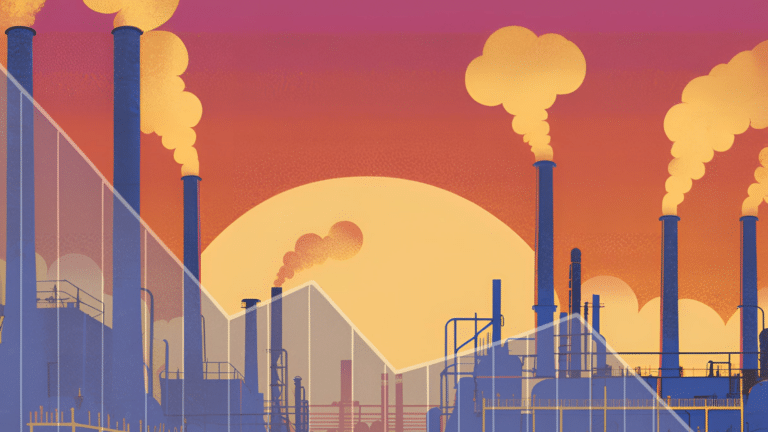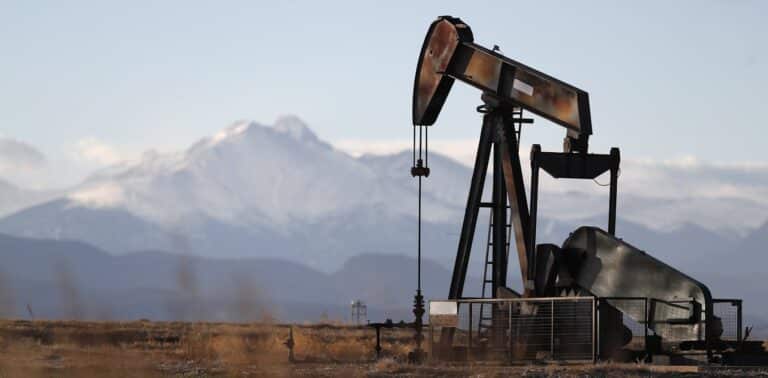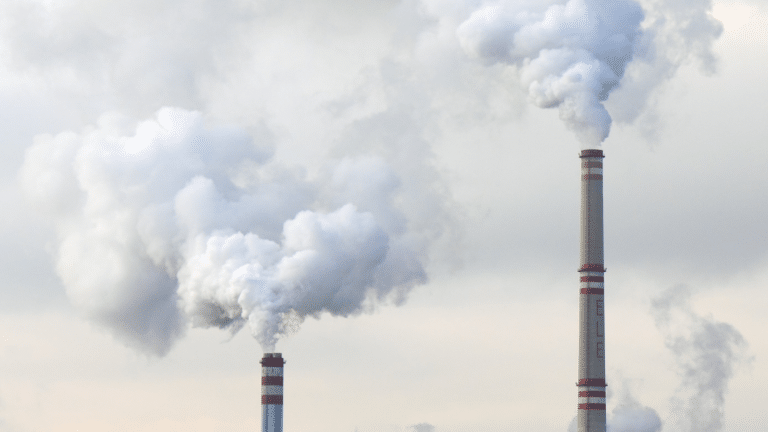Full report
Venezuela Oil Sanctions: Not an Easy Fix
Commentary by Luisa Palacios & Francisco Monaldi • March 23, 2022
Current Access Level “I” – ID Only: CUID holders and approved guests only
Commentary by Luisa Palacios & Francisco Monaldi • March 23, 2022
This commentary represents the research and views of the author. It does not necessarily represent the views of the Center on Global Energy Policy. The piece may be subject to further revision. Contributions to SIPA for the benefit of CGEP are general use gifts, which gives the Center discretion in how it allocates these funds. More information is available at https://energypolicy.columbia.edu/about/partners. Rare cases of sponsored projects are clearly indicated.
Russia’s invasion of Ukraine has upended global energy markets and brought energy security issues back to the forefront of global attention. The unexpected visit of a US government delegation to Caracas for talks with Nicolas Maduro on March 5th may be considered an example of official recognition of this imperative.[1] The visit led to speculation that sanctions on the Maduro regime could be lifted and that a rapid ramp up of Venezuelan oil production and export could result.[2]
This commentary makes three arguments concerning these recent developments. First, rather than potentially leading to the lifting of US sanctions on the Maduro regime, the visit could result in – provided certain conditions are met – an easing or softening of existing oil sanctions via licenses for some of the international oil companies (IOCs) that still operate in Venezuela.[3] Second, in the short term, it is unlikely that this scenario, should it come to pass, would offer any meaningful relief to global oil markets, as substantial increments in oil production from Venezuela would require overcoming many obstacles and risks, even with a potential softening of oil sanctions. However, the latter would likely lead to the redirection of Venezuela’s existing oil exports to the US market. Third, Venezuela has already seen a recovery of oil production, albeit from historically low levels. In a context of no sanctions relief, continued recovery is not guaranteed and might depend on how geopolitical events impact Russian oil exports and the outcome of the Iranian nuclear negotiations.
According to official figures from the Organization of the Petroleum Exporting Countries (OPEC), Venezuelan oil production recovered from a historically low level of 500,000 barrels per day (b/d) in 2020 to a yearly average of 636,000 b/d in 2021 and, most recently, 788,000 b/d day in February 2022. The latter amount is more than twice as much as the lowest monthly official figure of 392,000 b/d in June 2020, but slightly less than the 817,000 b/d of average oil production in the fourth quarter of 2021.[4]
One key factor supporting this recovery was higher oil prices. Given very deep discounts of Venezuelan oil, these increased prices improved the risk/reward of trading Venezuela’s sanctioned oil through opaque channels.[5] This trade depended, in turn, on the availability of condensates, which Venezuela secured in a deal between PDVSA (Venezuela’s national oil company) and NIOC (the National Iranian Oil Company) in September 2021.[6] The steady flow of condensates from Iran served as an effective mechanism for Caracas to evade US sanctions.
These developments underscore the reality that Venezuela’s oil production recovery is linked to the country’s vast onshore extra-heavy oil reserves in the Orinoco belt, which currently represents around 60 percent of the country’s crude output. High sulfur, Orinoco oil at 7-10 API can only flow to markets after being blended with lighter crudes, condensates, or other refined products, unless it is upgraded. But Venezuela’s upgraders are operating significantly below capacity due to severe maintenance issues.
Given higher oil prices and tight oil supply markets, one could conclude that Venezuela’s oil production recovery will continue into the future. However, numerous factors complicate this assumption.
Venezuela was producing 1.5 million b/d in 2018, before oil sanctions were imposed in early 2019, and about 900,000 b/d in early 2020, before the start of the pandemic and the imposition of secondary sanctions on subsidiaries of Russia’s national oil company Rosneft (which were helping PDVSA evade the sanctions by trading most of Venezuela’s oil in 2020).[7] Lack of investment in Venezuela’s oil sector and severe maintenance issues with its oil infrastructure have severely limited its oil production capacity, which is now estimated at around 1 million b/d, although there is significant uncertainty around the accuracy of this figure.[8]
The question is whether Venezuela’s oil production could still see another 100,000-300,000 b/d increase towards that 1 million b/d estimated capacity.[9] The recently imposed Russian sanctions have increased uncertainty around Venezuela’s oil production outlook in several ways. First, vast quantities of Russian oil will now enter the previously mentioned opaque trade channels of sanctioned oil from national oil companies. The market for most of Venezuela’s sanctioned oil is China. Increased competition from heavily discounted Russian oil in the Chinese market might jeopardize Venezuela’s market share, especially given the comparatively low quality of extra heavy high sulfur Venezuelan oil and high cost of transporting it to China.
Second, PDVSA’s foreign-denominated bank accounts have reportedly been transferred to Russian banks in an attempt to circumvent its own US sanctions.[10] Sanctions imposed on Russian banks following Russia’s invasion of Ukraine could have frozen significant PDVSA funds, adding an additional layer of uncertainty to Venezuela’s oil operations going forward.
Third, there is a sizable Russian presence in Venezuela’s oil industry, which in the context of the Russian invasion adds yet another layer of complexity to any discussion about oil sanctions relief in Venezuela and the production outlook from these Russian assets. Among the most important players in the Orinoco belt is Petromonagas (PDVSA 60%, Russia 40%). The Petromonagas joint venture (JV) used to be Rosneft’s, which transferred each of its five Venezuelan oil JVs to a Russian government entity after the imposition of secondary sanctions on Venezuelan oil in 2020.[11] Bloomberg has reported that Russia was producing about 120,000 b/d in Venezuela, or 15% of the country’s oil production.[12]
Fourth, any easing of oil sanctions on Iran pursuant to the resurrection of the Joint Comprehensive Plan of Action (JCPOA) might reduce the incentives of Iran’s national oil company to continue exporting its oil products to Venezuela and propel it to fetch international prices for its products instead.
All of these factors constrain Venezuela’s oil production outlook in the absence of sanctions relief. But while sanctions relief is a necessary condition for improving Venezuela’s oil outlook going forward, it is by no means a sufficient condition. The country’s oil sector faces a host of other problems including a dearth of private investment after the Venezuelan government expropriated oil companies and oil service providers and after PDVSA and the government defaulted on creditors. Also hindering the sector are severe maintenance issues with the country’s oil infrastructure and the brain drain of oil expertise. In addition, the extremely weak environmental, social, and governance (ESG) record of PDVSA and the Venezuelan government will likely make it difficult for international actors to commit CAPEX without a major overhaul of the institutional framework, including the role of the national oil company in the oil sector.
The unexpected visit of US delegates to Venezuela in the context of Russia’s invasion of Ukraine has raised interest in Venezuela’s oil sector. Attention has focused on a concrete proposal by Chevron to the US government to allow the company to use oil production from its JVs with PDVSA as a means of paying down accumulated debt.[13] Chevron has two JVs of consequence in Venezuela: Petroboscan (PDVSA 60.8%, Chevron 39.2%), which had produced around 120,000 b/d in the past, and Petropiar (PDVSA 70%, Chevron 30%), which has a 180,000 b/d capacity upgrader but has been producing well below capacity.
Chevron is not the only IOC of relevance in Venezuela. Repsol and Eni also have oil and gas operations in the country, most notably in the giant natural gas-producing field La Perla. This field holds 15 trillion cubic feet of reserves and is mostly used for domestic consumption, particularly electricity generation, a key consideration in a country experiencing a humanitarian crisis.[14]
Given the current state of Venezuela’s oil trade, part of which has migrated toward illicit routes,[15] any plan for easing sanctions (when conditions are met) will likely need to consider how this move can improve the humanitarian crisis, contribute to re-institutionalizing the country, and advance human rights, transparency, and governance while setting the path for democratization – in which case licenses to IOCs such as Chevron, Eni, and Repsol might be the way forward. The national oil company of Venezuela, PDVSA, is a sanctioned entity and, given very restrictive local oil laws, IOCs can only participate in the oil industry as minority JV partners. Therefore, as properties of a sanctioned entity, all US-based entities that hold JVs with PDVSA need a license from the US Treasury to operate. Easing sanctions through licenses to IOCs could lead to the re-institutionalization of oil flows and redirect Venezuelan oil exports to the more transparent US and European markets. IOCs are also subject to scrutiny of their ESG practices by their shareholders and the financial sector.[16] While not guaranteed, any hope of improving environmental standards in Venezuela will likely depend on help from IOCs.[17] In addition, such licenses could shift Venezuelan purchases of condensates to companies that abide by international standards and respect sanctions. Finally, if the goal is to ban Russian oil, then, given the Russian presence in Venezuela’s oil production, any easing of sanctions will need to be targeted and carefully designed to meet strict commingling restrictions.
[1]John Hudson and Samantha Schmidt, “U.S. Officials Make Rare Trip to Venezuela, Discuss Resuming Oil Imports to Help Replace Russian Fuel,” The Washington Post, March 6, 2022, https://www.washingtonpost.com/world/2022/03/06/venezuela-american-officials-visit/.
[2] For an overview of Venezuela’s sanctions regime, see “Venezuela: Overview of U.S. Sanctions,” Congressional Research Services, updated January 22, 2021, https://sgp.fas.org/crs/row/IF10715.pdfhttps://home.treasury.gov/policy-issues/financial-sanctions/sanctions-programs-and-country-information/venezuela-related-sanctions. For a review of the impact of US oil sanctions on Venezuela, see Francisco Monaldi and José La Rosa Reyes, “U.S. Policy Toward Venezuela’s Hydrocarbon Sector,” policy brief, Baker Institute for Public Policy, Rice University, February 23, 2021, https://doi.org/10.25613/scns-td1.
[3] Peter Martin and Jennifer Jacobs, “Sullivan Says Venezuela Sanctions Relief Needs ‘Concrete Steps,’” Bloomberg, March 13, 2022, https://www.bloomberg.com/news/articles/2022-03-13/sullivan-says-venezuela-sanctions-relief-needs-concrete-steps.
[4] OPEC, Monthly Oil Market Report, March 2022, https://www.opec.org/opec_web/en/publications/338.htm.
[5] “PDVSA Sells Fuel Oil at Deep Discounts to Empty Glut: Report,” SP Global, January, 14, 2020, https://www.spglobal.com/commodity-insights/en/market-insights/latest-news/oil/011420-pdvsa-sells-fuel-oil-at-deep-discounts-to-empty-glut-report.
[6] Deisy Buitrago, Marianna Parraga, and Matt Spetalnick, “Exclusive: Under U.S. sanctions, Iran and Venezuela Strike Oil Export Deal,” Reuters, September 25, 2021, https://www.reuters.com/business/energy/exclusive-under-us-sanctions-iran-venezuela-strike-oil-export-deal-sources-2021-09-25/.
[7] Katrina Manson, David Sheppard, and Michael Stott, “US Imposes Sanctions on Rosneft Subsidiary over Venezuelan Oil,” The Financial Times, February 18, 2020, https://www.ft.com/content/f505d6da-5260-11ea-8841-482eed0038b1.
[8] Juan Forero and Patricia Garip, “The U.S. Shifts Focus to Venezuelan Oil, but Output Is Low,” The Wall Street Journal, March 7, 2022, https://www.wsj.com/articles/the-u-s-shifts-focus-to-venezuelan-oil-but-output-is-low-11646694776America’s Quarterly, March 7, 2022, https://www.americasquarterly.org/article/reaction-us-delegation-meets-with-maduros-venezuela/.
[9] According to OPEC’s March 2022 Monthly Oil Market Report (cited previously), secondary sources placed Venezuela’s oil production at 680,000 b/d in February, 100,000 b/d below official estimates. Potential increases in oil production from Venezuela will also depend on accurate estimates of current oil production levels.
[10] Marianna Parraga, Vivian Sequera, Matt Spetalnick, and Diego Oré, “U.S., Venezuela Discuss Easing Sanctions, Make Little Progress: Sources,” Reuters, March 6, 2011, https://www.reuters.com/world/americas/us-venezuela-discuss-easing-sanctions-make-little-progress-sources-2022-03-06/.
[11] Gabrielle Tétrault-Farber and Olesya Astakhova, “Rosneft Sells Venezuelan Assets to Russia after U.S. Sanctions Ramp Up,” Reuters, March 28, 2020, https://www.reuters.com/article/us-russia-rosneft-venezuela/rosneft-sells-venezuelan-assets-to-russia-after-u-s-sanctions-ramp-up-idUSKBN21F0W2.
[12] Fabiola Zerpa and Ezra Fieser, “Russian Oil Rigs in Venezuela Complicate U.S. Talks with Maduro,” Bloomberg, March 11, 2022, https://www.bloomberg.com/news/articles/2022-03-11/russian-oil-rigs-in-venezuela-complicate-u-s-talks-with-maduro.
[13] Marianna Parraga and Matt Spetalnic, “Exclusive: U.S. Weighs Chevron Request to Take Venezuela Oil for Debt Payments,” Reuters, February 2, 2022, https://www.reuters.com/business/energy/exclusive-us-weighs-chevron-request-take-venezuela-oil-debt-payments-sources-2022-02-07/.
[14] The authors participated in an initiative by the Atlantic Council’s Venezuela Working Group to evaluate options for financing humanitarian aid to Venezuela with the revenues obtained from oil exports licensed by the US. See Atlantic Council’s Venezuela Working Group, Exploring Humanitarian Frameworks for Venezuela, March 2022, https://www.atlanticcouncil.org/wp-content/uploads/2022/03/Exploring_humanitarian_frameworks_for_Venezuela.pdf.
[15] Daniel Drezner, Emma Ashford, Adem Abebe, and Luisa Palacios, “Debating US Sanctions in Venezuela and Ethiopia,” Inkstick, December 13, 2021, https://inkstickmedia.com/adults-in-a-room-v/.
[16] Luisa Palacios, “The Impact of ESG on National Oil Companies,” Center on Global Energy Policy, November 2021, https://www.energypolicy.columbia.edu/sites/default/files/file-uploads/NOC%20ESG%20commentary,%20designed%20v2,%2011.12.21.pdf.
[17] Gideon Long, “Venezuela’s Environmental Crisis: ‘The Beginning of a Wave of Destruction,’” The Financial Times, January 16, 2022, https://www.ft.com/content/92583389-fcf7-43d1-b1f9-6516b4370bc2.
China’s demand for oil, long an important driver of global oil demand growth, slowed dramatically during January–September 2024. Between 2000 and 2023, China accounted for 50 percent of...



Full report
Commentary by Luisa Palacios & Francisco Monaldi • March 23, 2022